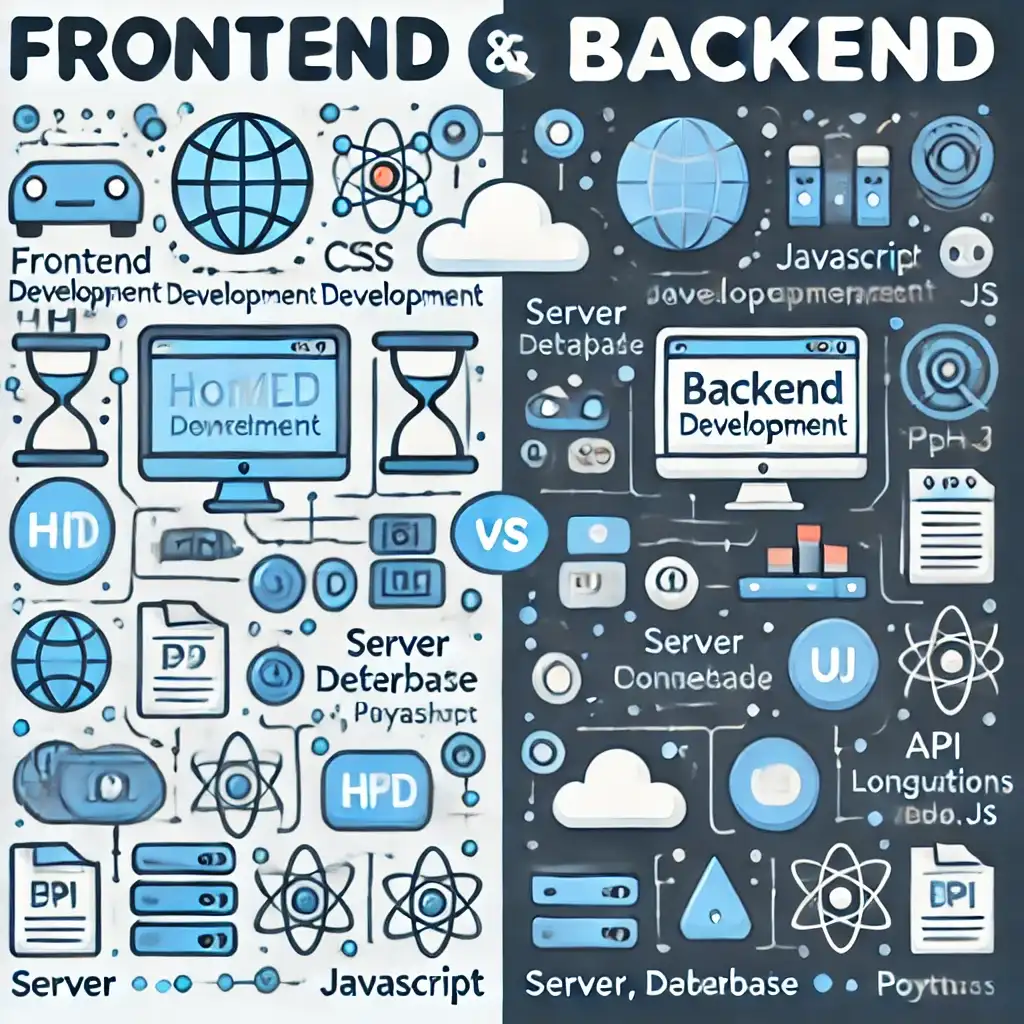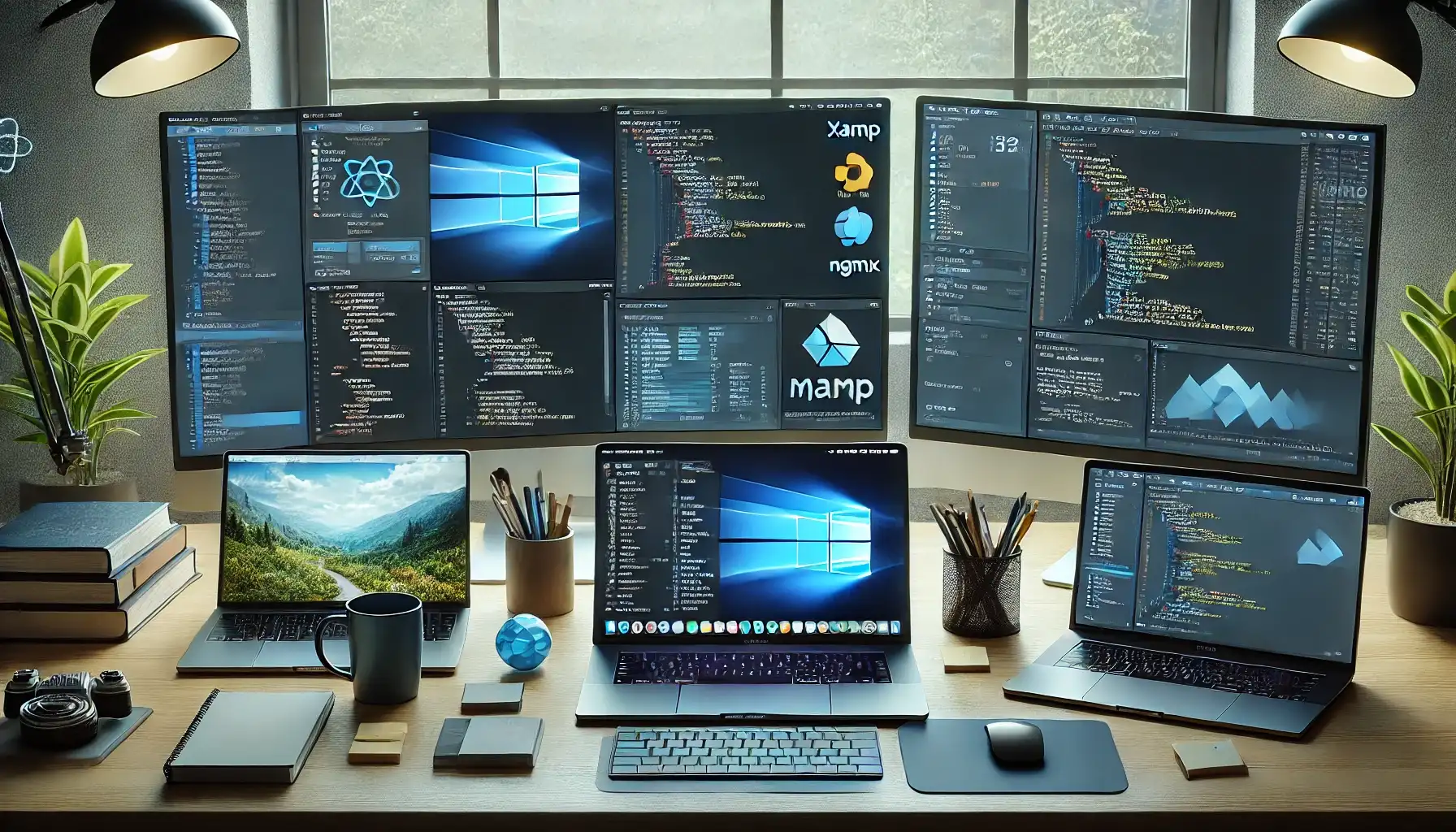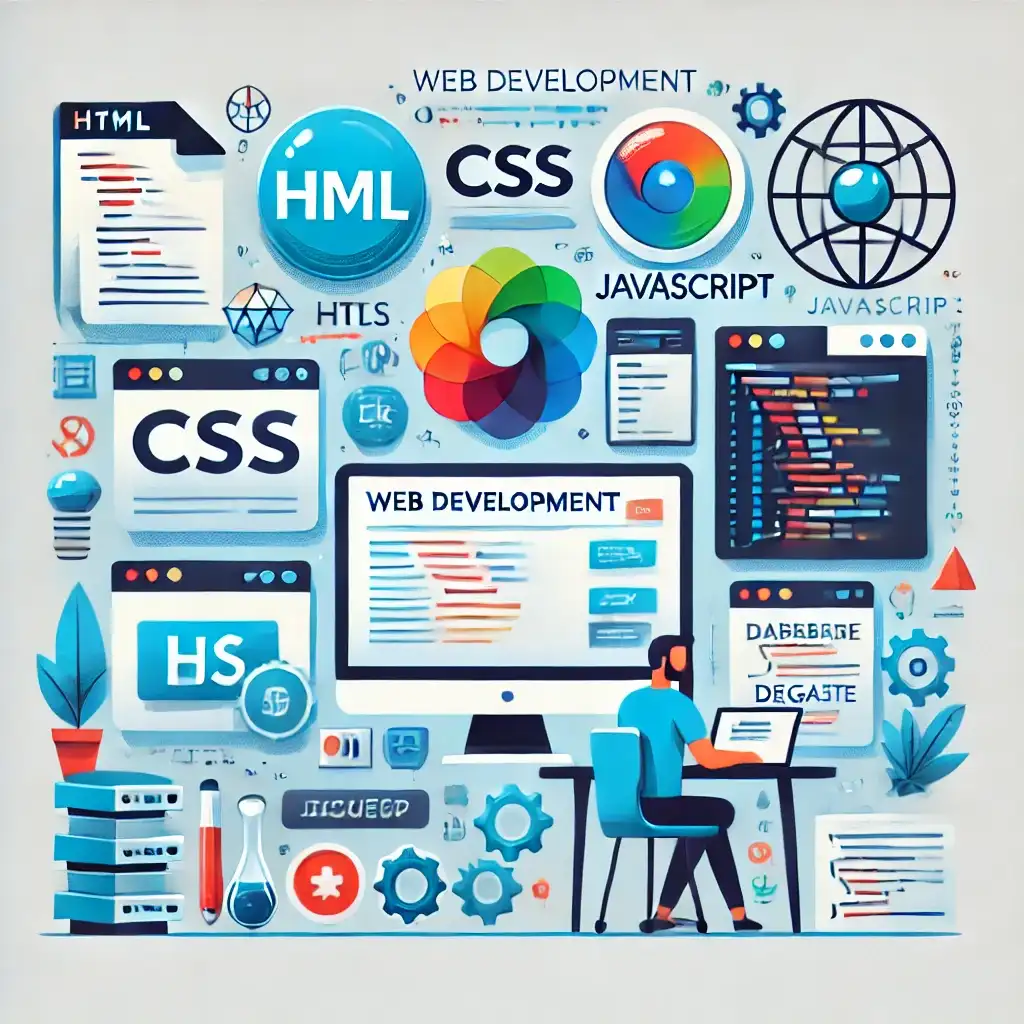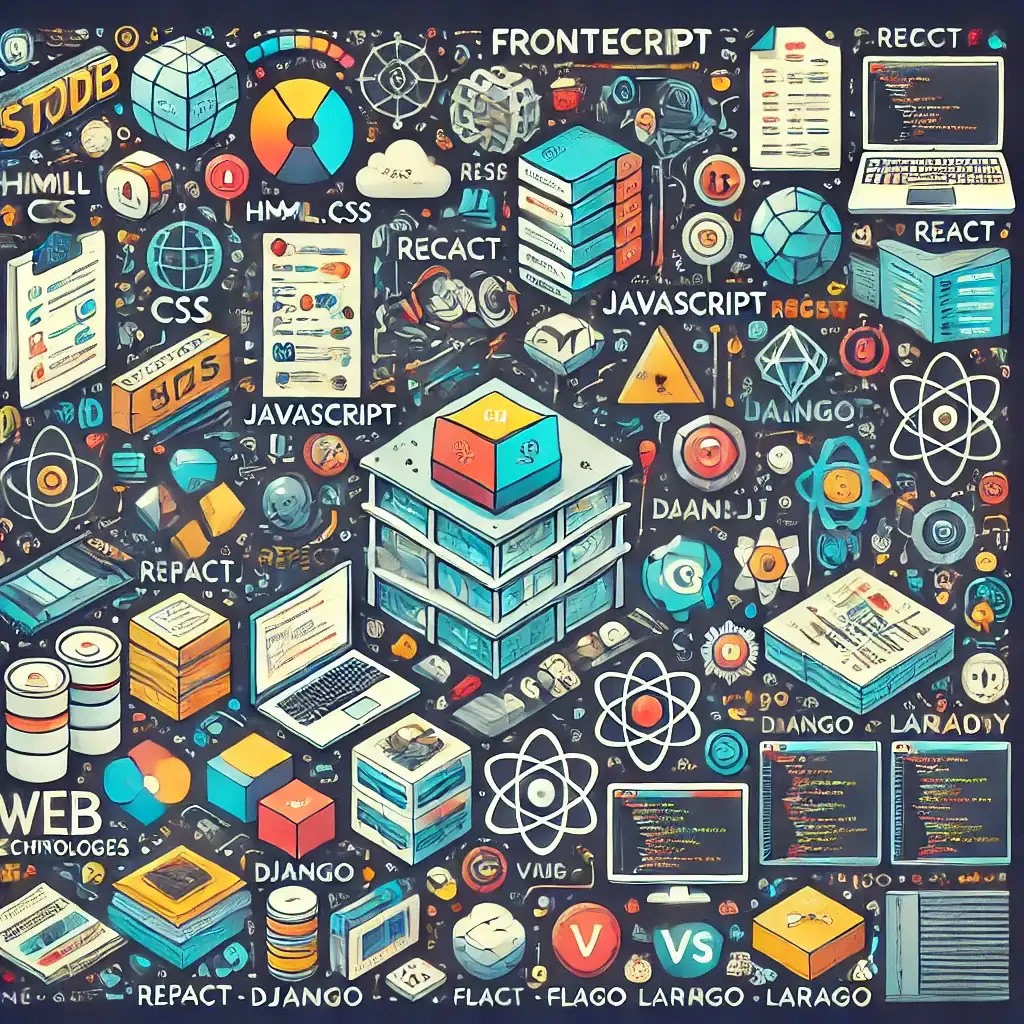
The world of web development is divided into two main areas: Frontend Development (User Interface) and Backend Development (Server Side). A website includes both visible and behind-the-scenes components. Let me explain what frontend and backend development are, which technologies are used, and the differences between them.
1. What is Frontend Development?
Frontend development involves the part of a website that users see and interact with. Actions like clicking buttons, filling out forms, and navigating layout elements all happen on the frontend.
Frontend Technologies and Tools
- HTML (HyperText Markup Language): Builds the basic structure of the webpage.
- CSS (Cascading Style Sheets): Defines the colors, fonts, and layout of the page.
- JavaScript: Adds interactivity to the page (buttons, scroll effects, etc.).
- Frontend Frameworks: React, Vue.js, Angular help speed up frontend development.
- CSS Libraries: Tools like Bootstrap, Tailwind CSS, and Bulma simplify styling and responsive design.
- Webpack and Parcel: Used to optimize and bundle frontend code.
Responsibilities of a Frontend Developer
- Designing a user-friendly and aesthetic interface
- Ensuring responsive design (mobile and desktop compatibility)
- Adding interactive features that improve user experience (UX)
- Optimizing page performance
- Displaying data received from APIs
2. What is Backend Development?
Backend development involves the logic behind the scenes of a website, which users don't see. When a button is clicked or a form is submitted, backend processes are triggered.
Backend Technologies and Tools
- Backend Languages: PHP, Python, Node.js, Ruby, Java
- Databases: MySQL, PostgreSQL, MongoDB, Firebase
- Web Servers: Apache, Nginx
- API Technologies: RESTful APIs, GraphQL
- Backend Frameworks: Laravel (PHP), Django (Python), Express.js (Node.js), Spring Boot (Java)
- Authentication Systems: JWT, OAuth, Firebase Authentication
Responsibilities of a Backend Developer
- Storing and managing user data in databases
- Creating APIs for data communication with frontend
- Implementing user login and authorization systems
- Ensuring data security and encryption
- Optimizing the performance of web applications
3. Differences Between Frontend and Backend Development
| Aspect | Frontend | Backend |
|---|---|---|
| Description | The part users see and interact with | Logical and data layer of the website |
| Languages | HTML, CSS, JavaScript | PHP, Python, Node.js, Ruby, Java |
| Tools | React, Vue, Angular, Bootstrap, Tailwind | MySQL, PostgreSQL, MongoDB, Firebase |
| Goal | Focus on design and user experience | Data processing and application logic |
| Runs on | Client side (browser) | Server side |
| Developer Focus | UI/UX, design, animation | Database, APIs, server logic |
4. What is a Full Stack Developer?
Full Stack Developers are skilled in both frontend and backend development.
- Advantages: Can manage the entire project process.
- Disadvantages: Requires expertise in both areas, which can be time-consuming.
Final Words
Frontend and backend development are inseparable parts of modern web development. While frontend enhances the user experience and visual design, backend handles the data processing and functional logic behind the scenes. Both areas are essential for a successful website, and most developers choose to specialize in one of them.
Related Articles

Recommended Tools for Web Development







